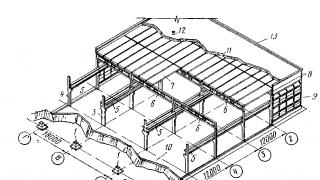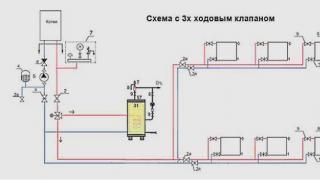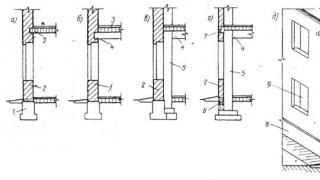The principle of operation of the boiler is simple as all ingenious: water is recruited into the container, it is warm or an open or a closed heater, and after turning the flag or the tap valve it merges to the consumer. After that, the whole cycle should be repeated first, and the whole complexity of the design of the accumulative water heater occurs precisely because of the need to reproduce the cycle of the fence-heating-water-giving water. Therefore, if you wish to understand how to choose a boiler for an apartment or at home, you will have to immerse yourself in its design and work principles are slightly deeper. After all, the right home water heaters can only be selected in case of understanding the essence of their work.
The principle of operation of the electric boiler - a detailed description of the work and design
Boiler is a classic accumulative water heater. It is crashed between the source (water supply or well) and the mixer and connects to the power grid. There are three main elements in the design of such an instrument:
- Capacity - tank for collecting and heating water. It is connected to it and the feed line (from the water pipeline), and the reset pipe (to the crane). The cross section of such a tank usually resembles either a cylinder or a rectangle with rounded edges.
- Heating element - TEN. It transforms electricity into thermal energy, heated water. There are dry and wet shades. The first are fenced from the fluid to the flask, the second - in contact directly with water.
- Thermostat - temperature controller. It tracks the temperature of the water in the tank and turns on or off the TEN, focusing on the result resulting. In fact, this is the "brains" boiler. Therefore, the overheating protection module is often inserted into such a block, and other sensors and control circuits.
As a result, the principle of operation of the electric type boiler looks like this: the water is fed to the tank along the pressure channel and fills it (the extended air leaves through a special valve). The thermostat estimates the water temperature and includes a TEN. The heater raises the temperature to a specified level, after which the thermostat turns off the TEN.
The user opens the crane and merges the portion of hot water, and the same amount of cold is added to its place (the pressure is set to the water supply). The thermostat checks the temperature again and turns on the TEN. And so until the next selection of the portion of hot water.
Here, in fact, all. And now let's see how this information will help us decide which water heater to choose for an apartment or at home. A small tip: When buying, we will look at the TEN, the tank and thermostat.
Boiler for a private house or apartment - two types of heating element
We mentioned above in the text that there are two species - dry and wet in modern cumulative heaters. Now we will try to figure out their advantages and disadvantages to purchase the right option.

Wet tan is mounted directly into the tank. Therefore, it is cheaper and demonstrates a very high efficiency (percentage of electricity transition to heat). Thanks to this, the boiler with a wet heater spends less electricity and is cheaper in operation.And this is good.
The disadvantage of the wet tank is only one - it attracts dissolved salts of metals dissolved in water and makes up for a very short time. After that, the efficiency of the heater drops, and he himself blows up. Therefore, deciding which water heater to choose - with wet or dry tan - users usually tend to the second option.
The dry heater is mounted in a flask from ceramics or metal. Directly with water such a TEN does not contact, therefore, it does not settle on it. In addition, such a heating element is removed from the tank without draining water, which greatly simplifies the boiler service.

The main disadvantages of dry tang is a high price and low efficiency (the heater lifts the temperature of the flask, which rifts the water, taking part of the energy). However, the high cost of a dry option and a small overrun of electricity is justified in the medium term - the user can save on the replacement of heaters.
As a result, deciding which boiler to choose for the arrangement of permanent hot water supply, it is better to pay attention to the models with dry TEN. Well, if you need a "spare" source of hot water, in case of disconnecting the central water supply, - choose a cheap option with a "wet" heater. For the month of summer solarms, he will not have time to get skid and fail.
Which water heater is better to buy - choose the volume of the tank
It does not matter where you live - in the city or country village. Before choosing a water heater for a private house or an urban apartment, you, in any case, will have to recalculate tenants applying for continuous use of similar technique.
The choice of water heater accumulative for an apartment or house based on the number of tenants is carried out according to the following proportion:
- One person will be enough 50 liter boiler.
- For 2-3 users, a heater is needed with 100 or 120-liter container.
- For a family of 4-5 people will have to buy a boiler for 150 or even 200 liters.

This volume is enough for the kitchen, and for a washbasin, and for the shower. But from taking baths to owners of cumulative water heaters is better to refuse. Otherwise, hygiene procedures will have time to make only one family member.
If your kitchen and bathroom are located at a considerable distance from each other, then instead of one boiler it is better to buy two water heaters. Moreover, the volume of the tank at the kitchen version should not exceed 15-20 liters. This is quite enough for washing dishes and products in a comfortable environment. If this is not done, then the bulk of the main heater is lost in a long pipeline connecting the boiler and kitchen sink. You will merge water cooled in pipes and provoke electricity overrun.
Alternative to Boiler - Flowing Water Heater
The accumulative heater has one significant disadvantage - a limited reserve of hot water, accessible to users here and now. That is, the first 20 or 30 minutes from the crane goes water of the desired temperature, then simply acceptable, and at the end - annoyingly cold. Therefore, it does not matter which boiler will be selected - by 50 or 150 liters - the user of the accumulative water heater will save hot water under any circumstances.
Fit this disadvantage can only be a fundamentally different thermogenerating device - a flow water heater, raising the temperature of non-limited volume of the fluid, and the entire flow extended by the pipeline. It is no longer needed to save - the user opens the crane and gets so much hot water as he needs. With a flow heater, you can take a bath at a time when another family member washes dishes in the kitchen.

However, before choosing an electric flowing water heater in an apartment, a homeowner should understand one fact: utility bills for such comfort will be just cosmic. While the boiler "Safety" is 3-5 kilowatt, the flowing heat generating device will translate into heat to 10-15 kW.
A completely different business is a gas flowing water heater. In this case, you get hot water for very modest money. But it can be put only after agreements with the gas service and in the presence of a main gas pipeline in the apartment. Keep this in mind, choosing the gas option in the store.
Do not chase the volume: 150-liter boiler for 1-2 users - this is not the best idea. Your card for the light will be just cosmic, and water will spend the water by 50-80 liters. After all, water in the boiler cools at a speed of 0.5-1.0 ° C per hour, and energy needs energy to maintain a given temperature thermostat.
The magnesium anode is not the fiction of marketers, such as killing silver microbes with silver ions (as if in the water heated to 60-70 ° C, at least some microorganisms would fit). Magnesium violates the natural course of the electrochemical process flowing in the tank, and attracts the whole scale and active oxygen, along the way, preventing corrosion of both the housing and the TEN. Therefore, the magnesium anode must be changed constantly. And if the boiler has no such anode, it is better to refrain from buying a similar heater.
Thermal protection of the case is very important. If the flask (inner capacity) is surrounded by three layers of foam plastic, mineral wool or other insulation, then this boiler will consume less electricity during idle time. Usually, only German manufacturers are solved on triple heat shield. Turkey and Poland sell cheaper models, with single-layer protection, but savings at the purchase stage can turn into serious spending during operation.
Wat and all. Now you know how to choose the right water heater for home, cottages or apartments.



